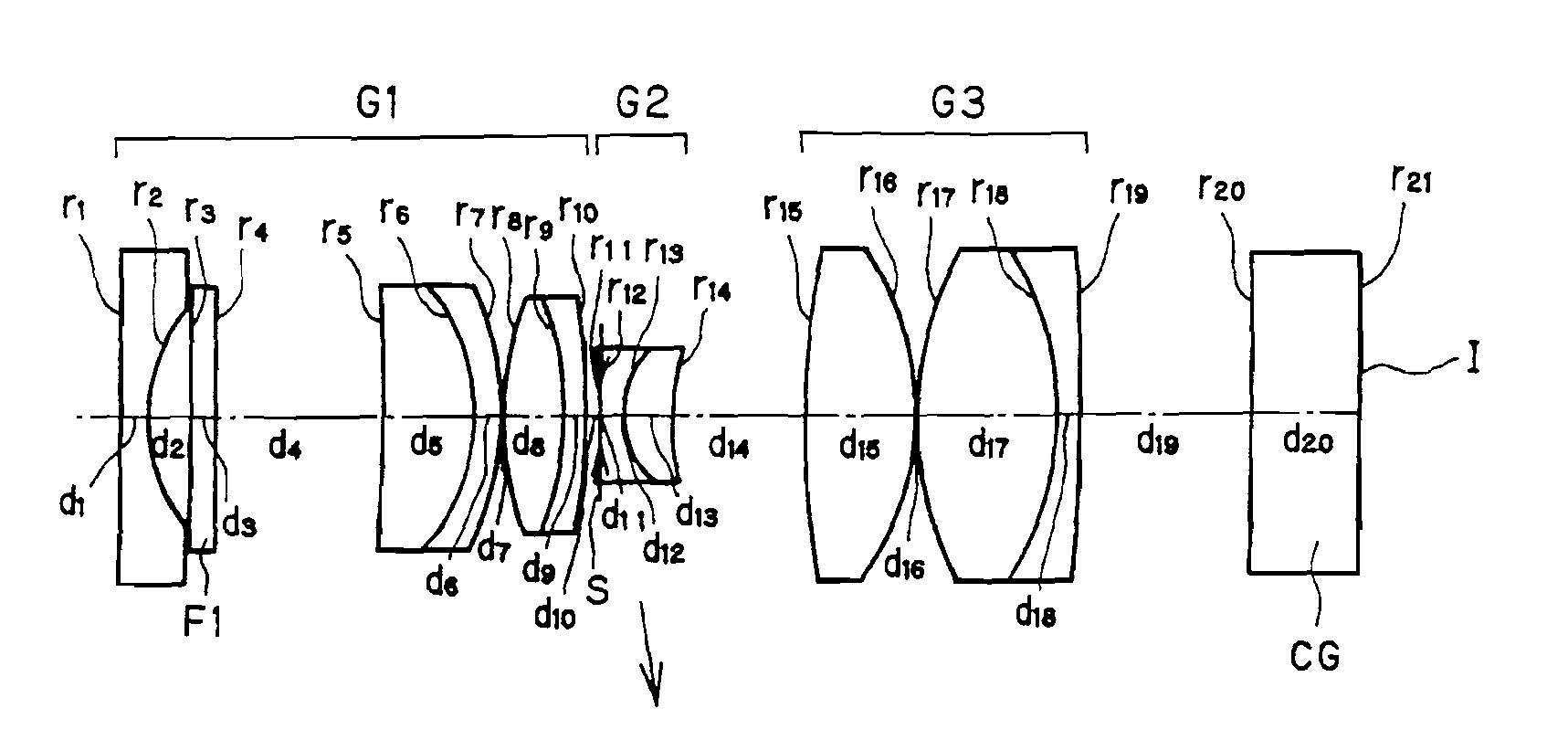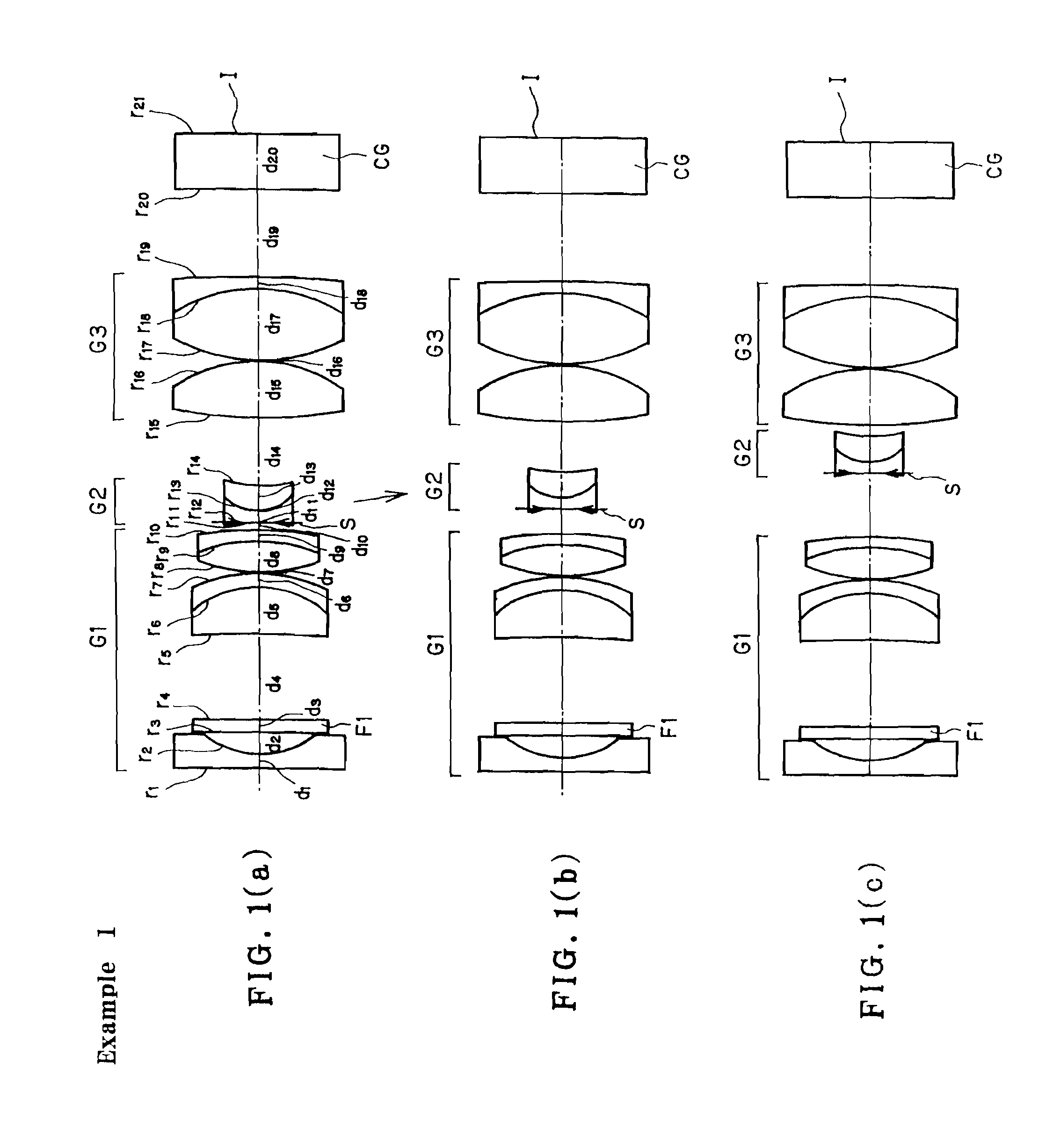Objective optical system
- Summary
- Abstract
- Description
- Claims
- Application Information
AI Technical Summary
Benefits of technology
Problems solved by technology
Method used
Image
Examples
example 1
[0091]FIG. 1 is illustrative in section through the optical axis of the construction of the endoscope objective optical system according to Example 1. Numerical data on the example here will be set out in Table 1, given later, and the values of variation parameters in three viewing states: (a) normal viewing, (b) transient and (c) closest-range viewing are tabulated in Table 2, given later. In these numerical data, “No”, “r”, “d”, “ne”, and “vd” is indicative of a surface number of an optical surface as counted from the object side, a radius of curvature, a surface-to-surface or air space, an e-line refractive index, and an Abbe constant, respectively. The radius of curvature and the surface-to-surface space are given in mm. Throughout the drawings, the optical surfaces with Nos. 1, 2, 3, . . . annexed to them are indicated by r1, r2, r3, . . . , and the surface-to-surface or air spaces between Surface Nos. 1 and 2, 2 and 3, 3 and 4, . . . are indicated by d1, d2, d3, . . . .
[0092]T...
example 2
[0095]FIG. 2 is illustrative in section through the optical axis of the construction of the endoscope objective optical system according to Example 2. Numerical data on the example here will be set out in Table 3, given later, and the values of variation parameters in three viewing states: (a) normal viewing, (b) transient and (c) closest viewing are tabulated in Table 4, given later.
[0096]The endoscope objective optical system here is made up of, in order from the object side, a first group G1 of positive refracting power, a second group G2 of negative refracting power and a third group G3 of positive refracting power. The first group G1 consists of, in order from the object side, a piano-concave negative lens, a positive cemented lens in which a positive meniscus lens convex on its image side and a negative meniscus lens convex on its image side are cemented together, and a positive cemented lens in which a double-convex positive lens and a negative meniscus lens convex on its ima...
example 3
[0099]FIG. 3 is illustrative in section through the optical axis of the construction of the endoscope objective optical system according to Example 3. Numerical data on the example here will be set out in Table 5, given later, and the values of variation parameters in three viewing states: (a) normal viewing, (b) transient and (c) closest-range viewing are tabulated in Table 6, given later.
[0100]The endoscope objective optical system here is made up of, in order from the object side, a first group G1 of positive refracting power, a second group G2 of negative refracting power and a third group G3 of positive refracting power. The first group G1 consists of, in order from the object side, a piano-concave negative lens, a positive cemented lens in which a positive meniscus lens convex on its image side and a negative meniscus lens convex on its image side are cemented together, and a positive meniscus lens convex on its object side. The second group G2 consists of a negative cemented ...
PUM
 Login to View More
Login to View More Abstract
Description
Claims
Application Information
 Login to View More
Login to View More - R&D
- Intellectual Property
- Life Sciences
- Materials
- Tech Scout
- Unparalleled Data Quality
- Higher Quality Content
- 60% Fewer Hallucinations
Browse by: Latest US Patents, China's latest patents, Technical Efficacy Thesaurus, Application Domain, Technology Topic, Popular Technical Reports.
© 2025 PatSnap. All rights reserved.Legal|Privacy policy|Modern Slavery Act Transparency Statement|Sitemap|About US| Contact US: help@patsnap.com



